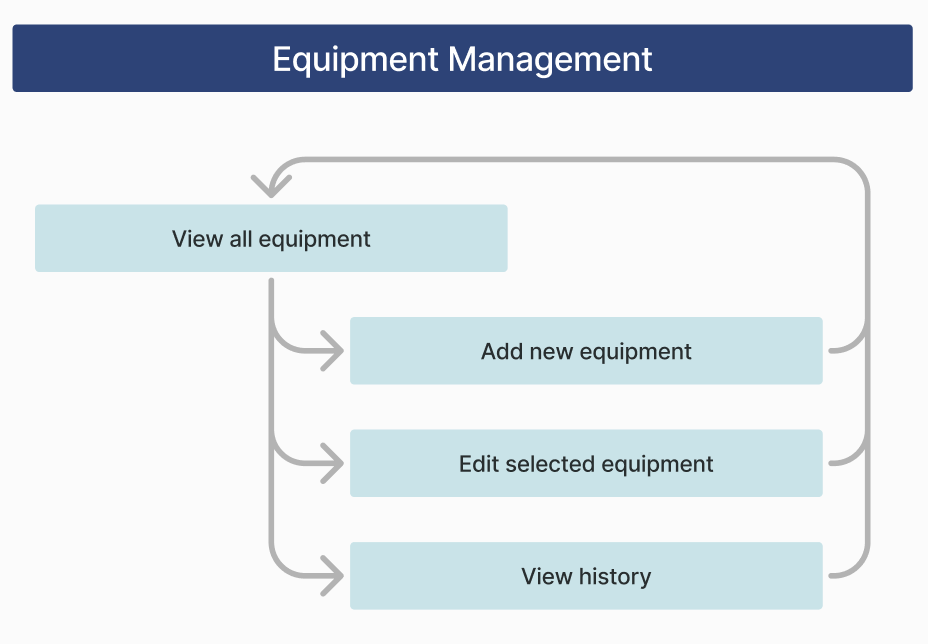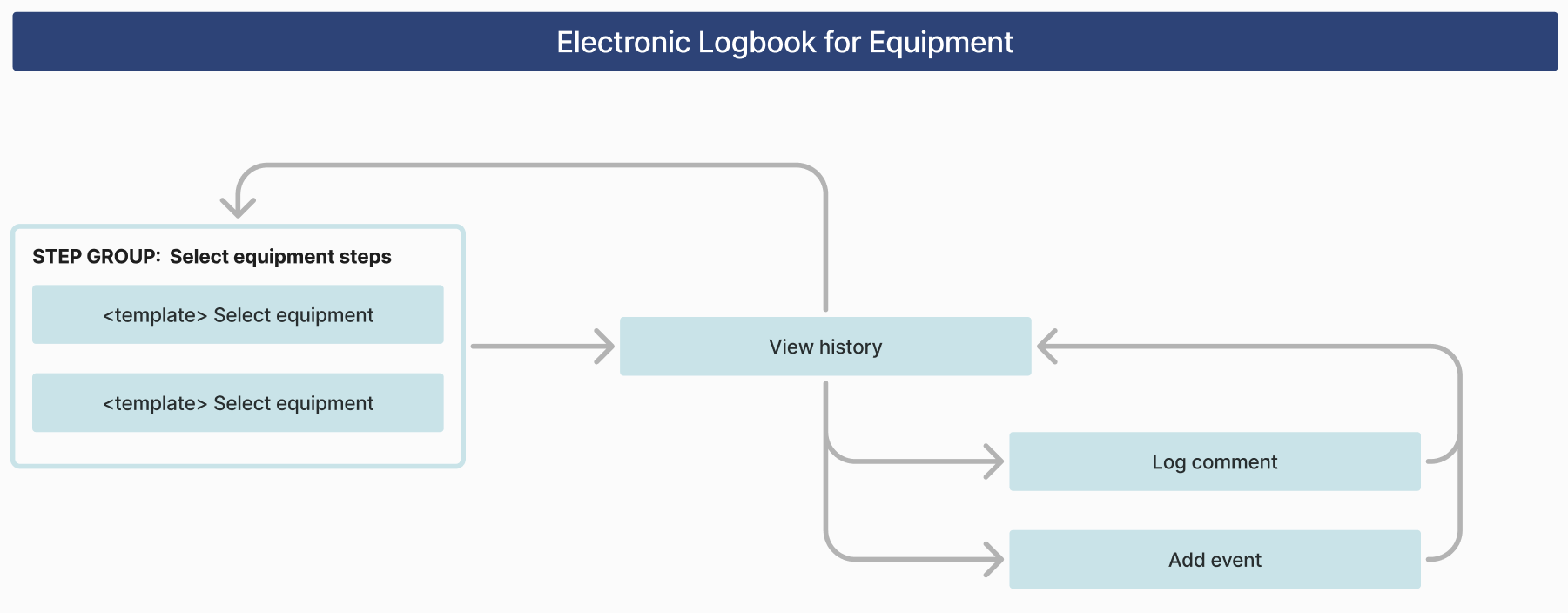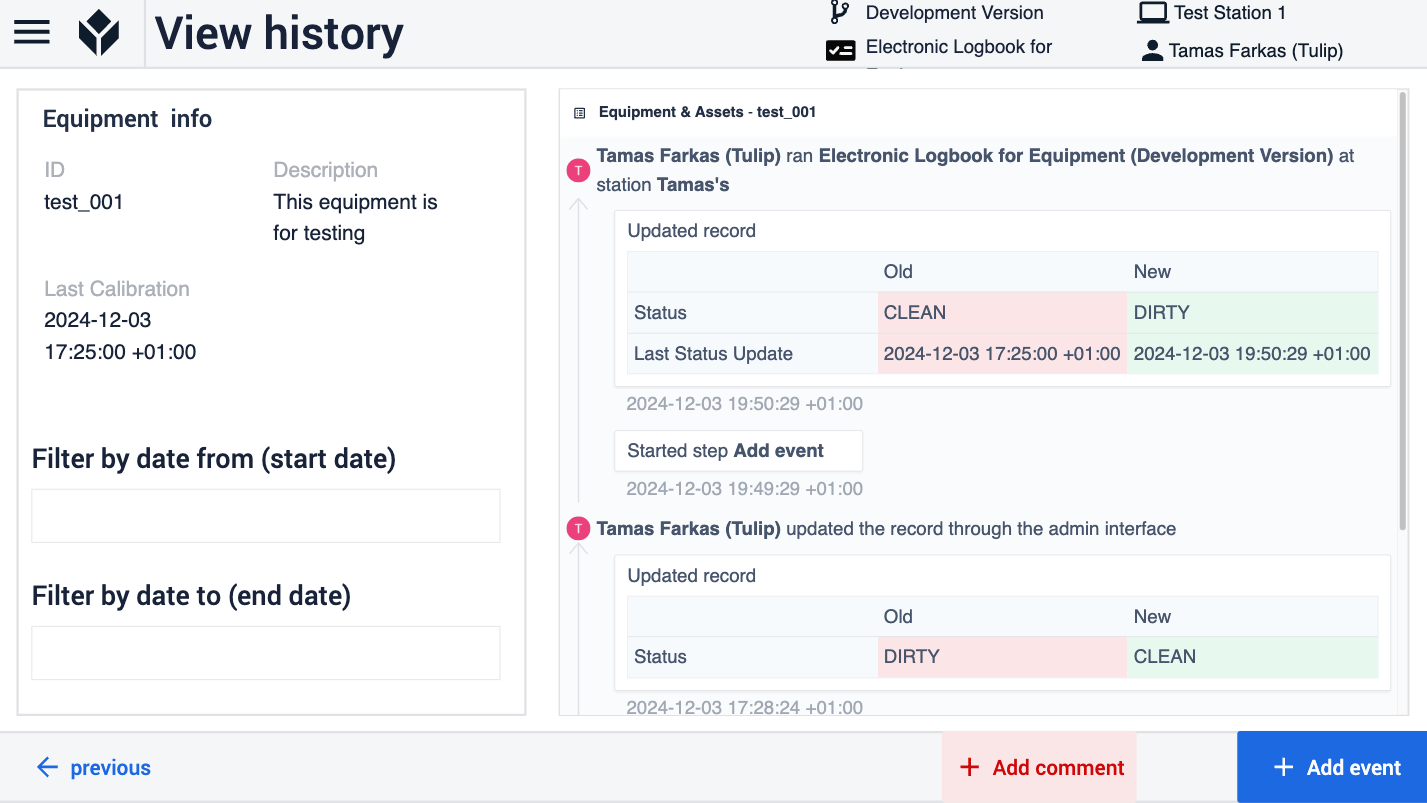Download the app suite.
Tabelle Tulip utilizzate nel gruppo di applicazioni
Le applicazioni del gruppo di applicazioni utilizzano due tabelle chiave: Attrezzature e beni e Commenti ed eccezioni.
La tabella Apparecchiature e risorse è il luogo in cui vengono memorizzate le informazioni sulle apparecchiature, compresi i vari stati. La tabella Commenti ed eccezioni viene utilizzata per registrare gli eventi imprevisti che si verificano durante i processi o i commenti creati dagli operatori. Queste tabelle garantiscono un'organizzazione efficiente dei dati e una gestione fluida delle operazioni, mantenendo tutte le informazioni rilevanti in un unico luogo.
Gestione dello stato delle apparecchiature
La tabella tiene conto di due tipi distinti di stato:
Stato di calibrazione - riflette le condizioni di calibrazione dell'apparecchiatura. Stato di pulizia e utilizzo - indica la pulizia e l'utilizzabilità dell'apparecchiatura. Per entrambi i campi di stato, abbiamo aggiunto nella tabella un campo data e uno ora per memorizzare il timestamp dell'ultimo cambiamento di stato.
Questi campi possono essere utilizzati per creare automazioni che aggiornano automaticamente gli stati delle apparecchiature in background, in base a processi e condizioni predefiniti, senza alcun intervento da parte dell'utente.
Per saperne di più sul funzionamento di queste automazioni, consultate quanto segue: Azzeramento dello stato di calibrazione Azzeramento dello stato delle apparecchiature.
Applicazioni del gruppo di app Registro delle apparecchiature
Gestione delle apparecchiature

In questa applicazione, l'utente può creare un'attività nella tabella Apparecchiature e attività dopo aver fornito le informazioni richieste o modificare i dettagli di un'attività selezionata. Nella fase di visualizzazione della cronologia, l'utente può esaminare la traccia di controllo dell'asset selezionato. La traccia di controllo può essere filtrata su un intervallo di tempo specifico specificando una data.
Registro elettronico per le attrezzature

Questa applicazione è la versione elettronica di un registro cartaceo. Dopo aver selezionato un'apparecchiatura, l'utente passa alla fase Visualizza cronologia, dove può visualizzare i dati storici dell'apparecchiatura.
:::(Warning)The app offers two options for selecting the asset. In the first option, the equipment can be selected from a table, and in the second option, the asset can be identified using an optical barcode scanner. It’s not mandatory to use both options. Choose the one that best supports your process.
:::

Nella fase di visualizzazione della cronologia, l'utente ha a disposizione due opzioni. Nel caso di Aggiungi evento, l'applicazione porta l'operatore al passo Aggiungi evento, dove l'operatore può selezionare manualmente l'operazione eseguita sull'asset. L'operazione selezionata visualizza automaticamente il nuovo stato dell'asset.
| Operazione | Stato |
|---|---|
| Pulizia | PULITO |
| Utilizzo della produzione (inizio) | IN USO |
| Utilizzo della produzione (fine) | SPORCO |
Premendo il pulsante Salva, la modifica viene finalizzata e l'applicazione torna al passaggio Visualizza cronologia. L'altra opzione consiste nel registrare un nuovo commento nella tabella Commenti ed eccezioni.
